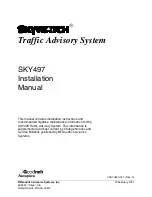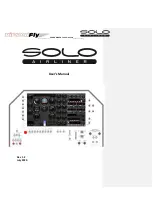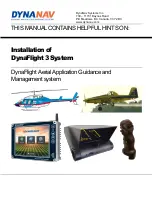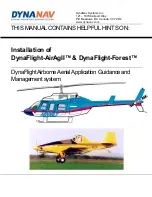
EFD1000 E5 Dual Electronic Flight Instrument (EFI) Install Manual
DOCUMENT # 900-00041-001
PAGE 67-226
REVISION D
© Copyright 2019 Aspen Avionics Inc.
Magnitude
Total Gauss Field (TG)
(1)
Aircraft Equipment or Structure
Suggested Separation to RSM
1200 – 1800
(extremely high)
or
200 -300
(extremely low)
Servo Motors, Fan Motors, magnetized-
steel tube/welds/Steel wound ducting/
fasteners
15 inches
Greater than 1800
Speakers
24 inches plus
Note: The separations above are not absolute and further minimum distances may be required!
The installing dealer is responsible for choosing a proper RSM location.
(1)
This column is only
applicable to the HMR2300 tester.
Place the HMR or small handheld compass in the proposed RSM mounting location and
move the compass around the location looking for needle deflection. There should be no
more than 2º of compass needle movement within an area 18” x 18”x 18” around the
proposed location. Should the compass show excessive needle movement it would be
required to find a new location or, if feasible, treat the affected area with a degaussing
coil. Contact your authorized dealer for information on obtaining or using a handheld
degaussing coil. A degaussing coil can be purchased at most audio and video stores.
Operate flight controls from stop to stop and verify no more than 2º of compass needle
movement. Should the compass show excessive needle movement it would be required
to find a new location or degauss the flight control cables and or flight control hardware.
Operate all electrical systems. The compass needle should not deflect more than 2
degrees during testing.
If a location cannot be found with less than 2 degrees of deflection then the electrical
device causing the interference will need to be determined. The device causing the
interference may need to be re-bonded or the wiring may need to be relocated.
If the HMR or compass does not show any deflection from electrical or mechanical
sources, then that location should be acceptable to mount the RSM. The installer is
responsible to choose an RSM location that provides satisfactory heading accuracy.
6.9.5
Pressurized Aircraft
On pressurized aircraft it may be necessary for the RSM wiring to penetrate the aircraft
pressure vessel. The installer is responsible for obtaining proper documentation and FAA
approvals from either the airframe manufacturer or from a DER or FAA field office for any
penetrations of the pressure vessel or bulkhead.
NOTE: Penetration of the pressure vessel is not approved under this STC and will require separate
approval.
NOTE: Mounting the RSM on the pressure vessel is beyond the scope of this STC and requires
separate approval.







































